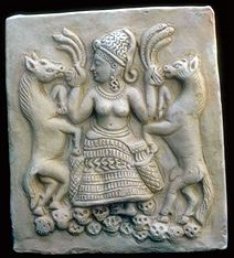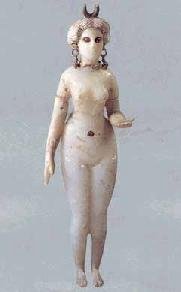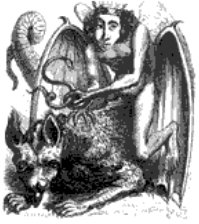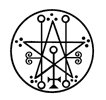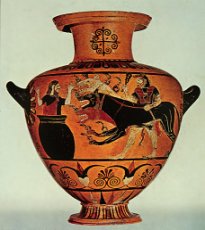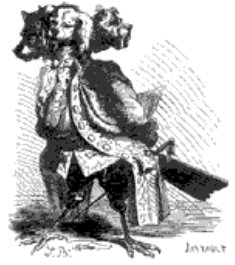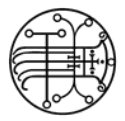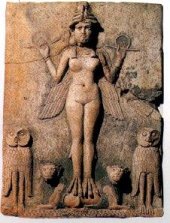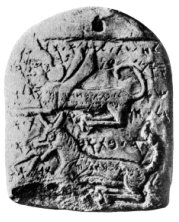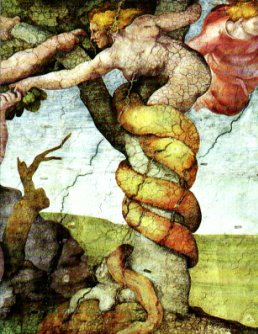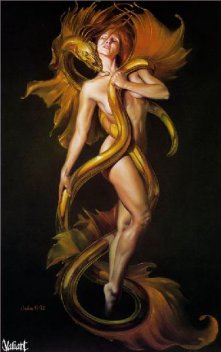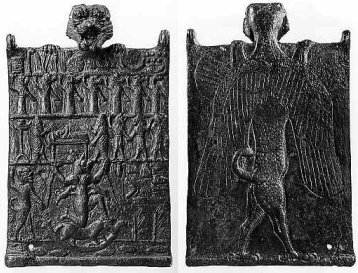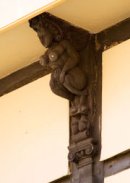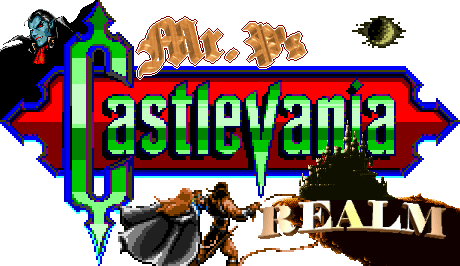
![]() Demon
Origins
Demon
Origins ![]()
What is a demon?
Writes Kev: "The word demon is probably a derivation of 'daio,' 'to divide.' It was generally used for spiritual beings of a lower order coming between gods and men. Today, it's almost always used for evil spirits. They are numerous; most sources say that there are more than 7,400,000 demons. Many past historians thought that there were cycles of demonic activity in order to explain various historical events like the destruction of Jerusalem, the fall of Rome or the French Revolution. The rise of Nazism and the Second World War have also associated been with an increase of demonic activity.
Since most demons are fallen angels, they are immaterial and usually invisible, like normal angels. They must possess or control a physical body to manifest themselves among men. In the past, and for those who believe in demons in the Christian sense, demons were said to travel invisibly but could assume physical appearance at will. The need for invisibility was in order to seduce humans. Demons love to masquerade and appear attractive in order to fool humans. Satan himself masquerades as an angel of light, and his servants as 'servants of righteousness.' In black magic, demons have often two shapes: Both monstrous and pleasant forms. A demon of high authority can appear in human form; those less important appear in the following forms in decreasing order: Animal, insect or plant, and finally as objects.
Origins
Beside the public and official cult of the twelve great gods, a rich demonology is present in the Assyrian culture. Demons were known by the generic name of 'udukku' ('spirit'). The scribes of King Assurbanipal made several copies of three great magical books; one of those was consecrated to incantations, conjurations and imprecations against evil spirits. In the Mesopotamian valley, demons were usually the spirit of natural forces like fire, plague and diseases, because the inhabitants thought that they were under constant attack from evil on all sides. Such demons -- like Pazuzu, for example -- often took the form of a conglomerate of parts from dangerous creatures, like snakes, scorpions, etc. During their captivity in Babylon, the Hebrews absorbed many Sumerian demons into they own folklore. One good example is Lilith.
The Persian prophet Zoroaster (or Zarathustra) founded the religion of Zoroaster, which teaches of an eternal struggle between light and darkness, good and evil. There is a cosmic struggle between the good Lord Ahura Mazda and Ahriman, the Evil Spirit. Many servants of Ahriman -- like Azazel, Lilith, Rahab and Leviathan -- were adopted by the Jews. The Greek demonology bears a huge heritage to the civilizations of the Indus, and many of the myths and monsters -- the Titans, Pan, the Hydra, Mermaids, etc. -- were also integrated into the Jewish and Christian demonology.
Many Tibetan divinities were previously fearsome demons and gods.
The concept of 'the devil' is of Hebrew origin; however the Avesta, the Sacred Book of the Jews, has an absence of an elaborate demonology. The rich growth of demonology in the Talmud is explained as the result of Babylonian or Persian influence during the Captivity. The Medieval Catholic theology treats of the creation and fall of the rebel angels, but the early heresies were cast out by the Fifth Ecumenical Council (545). During the troubled period of the Renaissance and the Reformation, there was an outbreak of old superstitions and evil practices, which resulted in great persecutions against people accused of practicing black arts; for this reason, this times was called 'the Burning Times.'
Grimoire
The term grimoire comes from
the Old French "gramaire" and was referred to in the Middle Ages
as books of basic instructions. Today it's considered as a book of magical
knowledge. Most grimoires were written between the end of the Middle Ages
and the 18th century; they are full of Jewish, Roman and Christian formula
and also biblical references plus prayers to angels. The grimoires associated
with black magic and the invocations of demons belong to the Goetia. During
the 19th century, many of the earliest-known grimoires were reclaimed by neo-Masonic
organizations.
Famous Grimoires
The Great Key of Solomon
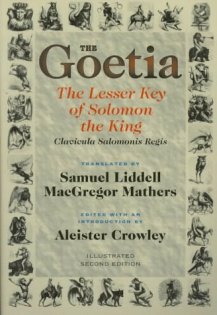
It was written in the 13th century, most likely, and translated to English in 1888. It's divided into three parts: 'Introduction and Book One,' 'The Holy Pentacle' and 'Book Two.' It discusses ceremonies, the proper behaviour of the Mage, the tools and materials needed, and the Pentacles.
Legemeton
This is probably the most well-known Grimoire and was also attributed to King Solomon. This is a collection of medieval and post-medieval grimoires originating in the 12th century. The best known of these books is the Goetia of Lesser Key, which contains a list of 72 demons associated with the decanates of the zodiac and how to invoke them.
The Book of Moses

The first five books of Moses are the first five books of the Bible; it was published in 1849 and translated in English in 1880. This book has unique illustrations of magic and lists of names of demons.
The Book of the Sacred Magic of Abramelin the Mage
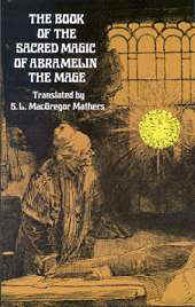
This book is the primary source for modern ceremonial magic; it contains instructions for invoking the Holy Guardian Angel and demons. The rituals are so complex that it's recommended to take a year away from work and family obligations to complete it.
Heptameron or Magical Elements
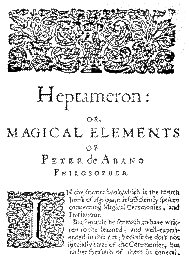
Attributed to the physician Peter de Abano (1250-1316), it details rites for conjuring angels. It was apparently one of the chief sources for the Lemegeton.
Grimoire of Honorious
Credited to Pope Honorius III, it was full of Christian benedictions and formulae but also requirements for obtaining a pact with the Devil. It was used to instruct priests in the arts of demonology.
The Book of Ceremonial Magic
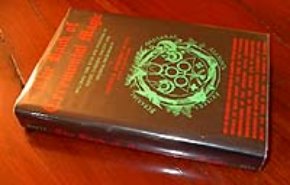
As popular as the Book of Black Magic, it includes descriptions from classic grimoires, including some from the Greater and Lesser Keys of Solomon. It has illustrations of magical seals.
Dictionnaire Infernal
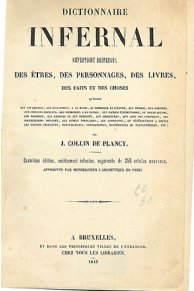
A set of 69 illustrations of demons created by Louis Breton and M. Jarrault; it was included by Collin de Plancy in his book Dictionnaire Infernal. This book was published in French in approximately 1800. Many of the pictures were republished in The Lesser Key of Solomon.
Pseudomonarchia Daemonum
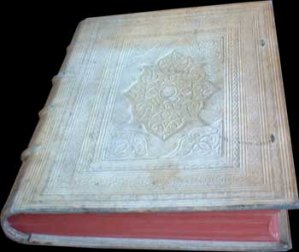
A treatise of witchcraft, written by Johann Weyer in 1853, was called De praestigiis daemonum. A section of this text called 'Pseudomonarchia daemonum' includes a listing of the names and descriptions of demons.
Necronomicon

This is a supposedly fictious grimoire made famous by Lovercraft which briefly appears in both N64 games, as seen in the picture above. Today, some agree that it's a compilation of texts from older grimoires.
Pentacles


A highly revered religious symbol that shows a five-pointed star enclosed in a circle. It was a common amulet of protection and healing in Babylon, where it was inscribed on pots to keep safe their contents. In the Judeo-Christian tradition, the Seals signified the secret names of God and were inscribed on King Solomon's magic ring; for this reason, it's mistakenly called 'Solomon's seal.' A pentacle in ascendant position signifies God but reversed it represents the devil. The symbol of the Church of Satan, founded in America in 1966, is an inverted pentacle with a goat head and symbols of the Kabbalah that spell out 'Leviathan.'
In modern witchcraft, it's very important and revered: The five points represent the five elements of nature (Earth, Air, Fire, Water and Spirit), the five senses of man, the five wounds of the Christ, and so on. Most modern pentacles are made of silver, the metal of the moon and psychic powers or of gold, the metal of power and energy. It's used in magical works as talismans to obtain possessions and to conjure helpful spirits. As amulets, they are used as protection against evil spirits.
Demon List
This is a list of various demons encountered throughout the series. In addition to the names and descriptions of demons, I include seals where I can; I also supply pictures games so that you can compare them to their traditional forms. Additionally, I point out the precise in-games locations where you can see said demons. Most of the engravings seen below were originally from Dictionnaire Infernal."
| Demon Name: | Abaddon |
| Alternate Name: | Appolion and Appollyn |
| Nicknames: | The Destroyer |
| Appearances: | "This is the second-to-last boss in Castlevania: Dawn of Sorrow and a Portrait of Ruin Nest of Evil foe. It is pictured as a cricket in the game because it is said to be the King of the evil locusts." |
| Game Pictures: |
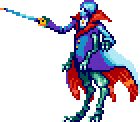 |
| Other Pictures: |
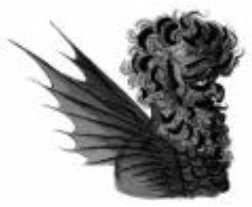 |
| Description: | "The name comes from the Hebrew and means 'to destroy'; it was known as a place of destruction. In the Babylonian Talmud, it's the second of the seven names of the underworld. In Job and the Revelation, he is the king of the abyss and commands an army of locusts; his demon servants are described as having bodies of winged war-horses, faces of humans, and a tails of scorpions. At some point, he ruled over both Egypt and Sodom. At the end of time, he will be given the key to the abyss and will release his demons onto the earth. The German alchemist Cornelius Agrippa (1486-1535) placed Abaddon as the monarch in the lower shadow of the sphere of the planet Venus in the Cabbalistic Tree. Appolyon is the Greek name of Abaddon." |
| References: | demons.monstrous.com/pictures/apollyon.jpg |
![]()
![]()
| Demon Name: | Adramelech |
| Alternate Name: | Adrammelech and Adramelechk |
| Nicknames: | None |
| Appearances: | "This is a boss encountered in the chapel in Castlevania: Circle of the Moon." |
| Game Pictures: |
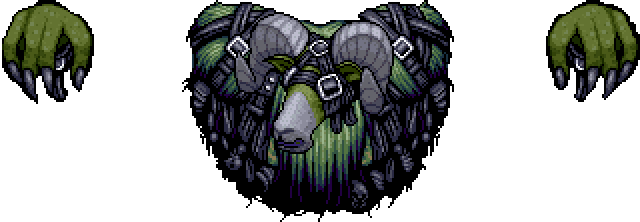 |
| Other Pictures: |
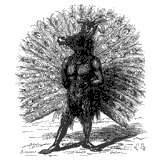 |
| Description: | "Adramelech is mentioned two times in the Old Testament: The first as a son of a Assyrian King, and the second as a Samarian sun god. He is described as a mule with a peacock feather-tail because he his proud of his position in the demons' hierarchy. Later, Adramelech (which means 'king of fire') became known as a high chancellor of Hell and president of the High Council of Devils; he was also the chancellor of the Order of the Fly, founded by Beezelbub. He is also one of the ten arch demons." |
| References: | demons.monstrous.com/pictures/adramelech.jpg |
![]()
![]()
| Demon Name: | Alastor |
| Alternate Name: | None |
| Nicknames: | The Executioner |
| Appearances: | "A lesser in enemy in Castlevania: Aria of Sorrow, Castlevania: Dawn of Sorrow and Castlevania: Portrait of Ruin. He is seen in the Chaotic Realm in the former and in The Abyss in the latter." |
| Game Pictures: |
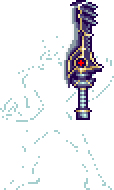 |
| Other Pictures: |
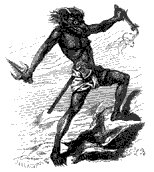 |
| Description: | "Alastores were evil spirits in Roman and Greek demonology; they were also mentioned by Plutarch. A poem written in 1816, called 'Alastor,' was a warning for idealists in search of an ideal love. According to the Dictionnaire Infernal, he is the Nemesis in the infernal hierarchy." |
| References: | www.deliriumsrealm.com/delirium/mythology/alastor.asp |
![]()
![]()
| Demon Name: | Amduscias |
| Alternate Name: | Amdukias and Amdusias |
| Nicknames: | None |
| Appearances: | "He is a lesser enemy in the Catacombs in Castlevania: Symphony of the Night and in Portrait of Ruin's Nest of Evil. Later (or earlier, in storyline progression); earlier in storyling progressiomany such monsters are seen in the Infinite Corridor, Dracula's Castle and the Tower of Evermore." |
| Game Pictures: |
 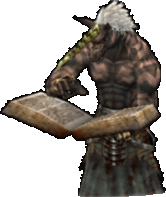 |
| Other Pictures: |
  |
| Description: | "One of the 72 spirits of Solomon, Amduscias is a Great Duke of Hell governing 29 legions. His true form is as a unicorn; however, he can appear as human when requested. All types of musical instruments can during this time be heard but not seen. Trees shall bend and incline to his command, and he is said to provide excellent familiars. The picture of Amduscias, from the Dictionnaire Infernal, is crowned in order to show that he is a great duke. He is also mentioned in the Goetia and the Pseudomonarchia daemonum." |
| References: | www.deliriumsrealm.com/delirium/mythology/amdusias.asp |
![]()
![]()
| Demon Name: | Andras |
| Alternate Name: | Andrainanyas |
| Nicknames: | None |
| Appearances: | "Andras is seen in Portrait of Ruin's City of Haze. Though only a lesser enemy, it's probably the strongest one in this area. Its sprite is very similar to the picture seen below. Also, it's no surprise to see it appear during a global war." |
| Game Pictures: |
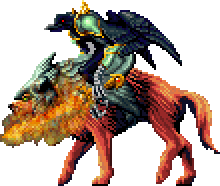 |
| Other Pictures: |
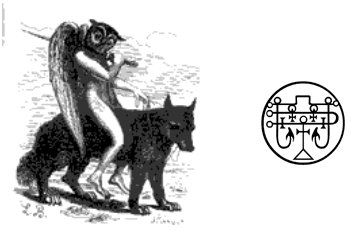 |
| Description: | "The sixty-third spirit of Solomon is Andras, a great marquis commanding thirty legions of spirits. He has the body of an angel and the head of an owl; he rides a black sword and carries a sharp and bright sword in his hand. He was skilled at sowing discords and turning people's own anger against them; he was for this reason sometimes summoned by military leaders in trying to incite wars. Andras was considered very dangerous, capable of killing the conjurers if precautions were not taken. The nature of his work is subtle, and he is very difficult to detect." |
| References: | www.deliriumsrealm.com/delirium/articleview.asp?Post=92 |
![]()
![]()
| Demon Name: | Astarte |
| Alternate Name: | Ashtaroth, Ashtoreth, Astaro and Astaroth |
| Nicknames: | Prince of Thrones, Lord Treasurer of Hell, and Prince of Accusers and Inquisitors |
| Appearances: | "Astarte is the boss in the Sandy Grave in Portrait of Ruin; this is because she was revered in Egypt. Since she is also associated with Aphrodite, it's no surprise if she can charm Jonathan." |
| Game Pictures: |
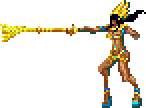 |
| Other Pictures: |
|
| Description: | "Astarte was a Canaanite fertility
goddess whose name means 'womb.' In Egypt, she is the most popular of
the three goddesses and known as the 'Lady of Heaven'; she may have been
the daughter of the sun god Ra. She is depicted sometimes with the head
of a lioness, cow or bull and riding naked in battle, carrying a shield
and club. She is associated with Aphrodite and Ishtar. In demonology, Astaroth is one of the spirits of Solomon; he is a mighty, strong duke of hell commanding forty legions of spirits. He appears as an ugly angel riding on an infernal beast carrying a viper in his right hand and having revolting breath. However, others describe him as a handsome human--half-black, half-white. Astaroth resides in America and has to be invoked on Wednesday between the tenth and eleventh hours of the night. He gives true answers of things past, present and future and can discover all secrets. He can afford men the power of knowing in all liberal sciences. Louis XVI's mistress, Madame de Montespan, was reputed to have offered him human sacrifices. Astaroth is also mentioned as one of the seven princes of hell who visited Faust. The first two pictures show the goddess Astarte, and the two others show the demon Astaroth and his seal." |
| References: | www.antinopolis.org/litcalendar-1.html www.deliriumsrealm.com/delirium/articleview.asp?Post=98 |
![]()
![]()
| Demon Name: | Bael |
| Alternate Name: | Baal |
| Nicknames: | The Lord |
| Appearances: | "He is a lesser enemy seen in The Arena and the Top Floor in Castlevania: Aria of Sorrow. Unfortunately, Bael is portrayed almost exactly the same as Buer." |
| Game Pictures: |
 |
| Other Pictures: |
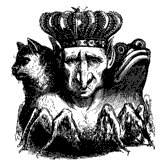 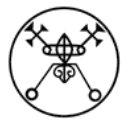 |
| Description: | "Originally, Baal was a god from Caanan worshipped by different people. He was originally a good god but later evolved into a terrible deity to whom children were sacrificed. Another of the 72 Solomon's spirits, Bael is a King ruling in the East with 66 legions under his command. He often has three, like a cat, a toad, and a man; and he speaks with a hoarse voice. He teaches the art of invisibility. He is mentioned in the Goetia, the Pseudomonarchai daemonum, the Grimoire of Honorious and of course the Dictionnaire Infernal." |
| References: | www.deliriumsrealm.com/delirium/mythology/bael.asp |
![]()
![]()
| Demon Name: | Beezelbub |
| Alternate Name: | Baalzebub, Beelzeboul, Beelzebub, Beelzebul, Beelzebuth and Belzebuth |
| Nicknames: | Lord of the Dung, Lord of the Dwelling and Lord of the Flies |
| Appearances: | "The boss in the Necromancy Laboratory in Castlevania: Symphony of the Night. He appears as a giant zombie; however, the flies that surround him look almost exactly as pictured in the Dictionnaire Infernal." |
| Game Pictures: |
  |
| Other Pictures: |
 |
| Description: | "The name Baalzebub is a derivation of the Canaanite 'Baal,' which means 'lord.' It translates into 'Lord of Flies.' He was an idol of the Canaanites, and his best-known shrine was in the city of Ekron. The King Ahaziah of Israel once consulted his oracle. Beezelbub is a prince of Demons living in Africa, second of the demonic order and above Lucifer. At witches' Sabbaths, he was lord and master over all the rites. He is presented in different ways: He can appear as a goat, a leopard or a fly, and he's known to rid whole harvests of the flies that inhabit them. He has the tendency to vomit flames. He is sometimes said to be of a prodigious size, as high as a tower, but others say that he is of similar size to us. He is mentioned in the Gospel of Nicodemus and in the Testament of Salomon (Kabbale)." |
| References: | www.deliriumsrealm.com/delirium/mythology/beelzebub.asp |
![]()
![]()
| Demon Name: | Behemoth |
| Alternate Name: | None |
| Nicknames: | None |
| Appearances: | "A giant bull pursues the character in Dracula X: Rondo's Main Hall. It does the same in Castlevania: Dracula X's Burning Town and returns to do the same in Castlevania: Portrait of Ruin. The remains of the creature are seen in the Colosseum in Castlevania: Symphony of the Night. Later, it is resuscitated as a boss in the Castle Center in both Nintendo 64 games." |
| Game Pictures: |
 |
| Other Pictures: |
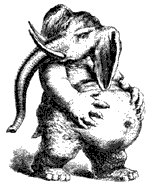 |
| Description: | "A spirit of the desert possibly deriving from the Egyptian deity Taueret. In Hebrew, the term 'behemoth' is the plural form of 'behemah,' which means 'beast.' In Jewish tradition, the Behemoth was the largest animal that ever lived on Earth; it was created by God from clay during the sixth day. Rabbis said that God killed the female of the species so that it could never reproduce. Later, many demonologists saw Behemoth as a demon rulling over the domain of gluttony presiding over banquets and feasts in Hell. Behemoth isn't included in the list of demons found in the Pseudomonarchia deamonum, but its author admits that it could be Satan himself. He is also mentioned in the Old Testament, in the Book of Job. Today, most zoologists conclude that this beast is probably based on the hippopotamus." |
| References: | www.deliriumsrealm.com/delirium/mythology/behemoth.asp |
![]()
![]()
| Demon Name: | Bifron |
| Alternate Name: | Bifrous, Bifrovs |
| Nicknames: | None |
| Appearances: | "Because the job of this demon is to take care of the dead, it's not really a surprise that many lesser enemies called bifrons appear in the Underground Cemetery in Castlevania: Aria of Sorrow. The beings called lossoths, which are encountered in the Catacombs in Castlevania: Symphony of the Night, are called bifrons in the Japanese version of the game. They appear under the name 'Lightkeeper' in Portrait of Ruin's portal area 13th street." |
| Game Pictures: |
|
| Other Pictures: |
 |
| Description: | "The forty-sixth of the 72 spirits of Solomon, it appears in the form of a monster, but at the command of an exorcist, it takes the shape of a man. He teaches astrology, geometry and other arts and sciences; he commands twenty-six legions of spirits. Together with Bune and Murmur, he is one of the three demons that held sway over the dead; he lights the candles upon the graves of the dead and moves bodies from one grave to another. He is mentioned in the Pseudomonarchia daemonium and the Legemeton, but it doesn't appear in the Dictionnaire Infernal." |
| References: | www.deliriumsrealm.com/delirium/mythology/bifrons.asp |
![]()
![]()
| Demon Name: | Buer |
| Alternate Name: | None |
| Nicknames: | None |
| Appearances: | "Many lesser enemies looking almost like the 'official' picture are seen in Castlevania: Aria of Sorrow, in the Castle Corridor and The Study. One year later, in Castlevania: Dawn of Sorrow, Soma will again encounter them, this time in the Demon Guest House and the Condemned Tower." |
| Game Pictures: |
 |
| Other Pictures: |
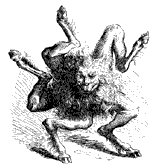 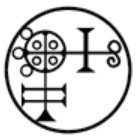 |
| Description: | "A Great President appearing in Sagittarius, it's the tenth spirit of Solomon. It teaches philosophy, ethics and the virtues of all herbs and plants. It is skilled in curing the sick and supplying helpful servants. Buer is the president of Hell and a demon of the second order who commands fifty legions. He appears as a five-branched star wheel that moves by rolling itself. " |
| References: | www.deliriumsrealm.com/delirium/mythology/buer.asp |
![]()
![]()
| Demon Name: | Cerberus |
| Alternate Name: | Naberius and Naberus |
| Nicknames: | None |
| Appearances: | "Cerberus is often a boss, first found in the Burning Town in Castlevania: Dracula X; it appeared later in Symphony's Abandoned Mine and Circle of the Moon's Catacomb. Many powerful three-headed hounds can be found in the two N64 titles, in The Villa and the Castle Center." |
| Game Pictures: |
 |
| Other Pictures: |
|
| Description: | "Son of Echidna and Typhon, Cerberus is a monstruous dog with three heads that guards the gate of Hell on the banks of the river Styx. The brother of Cerberus was Orphus, another monstrous hound with two heads. These creatures were probably inspired by the dogs haunting the battlefields during the night and eating dead bodies. When Heracles descended to Hell and struggled against Cerberus, the saliva of the hound dripped onto the ground, giving birth to a poisonous plant called aconite. Ancient Greeks placed a coin and small cake in the hands of the deceased; the coin was meant as a payment for Charon while the cake helped to pacify Cerberus. In Dante's Inferno, Cerberus tormented the souls of the Third Circle of Hell where the gluttons reside. In demonology, Cerberus is a great marquis of Hell and the twenty-fourth of Solomon's spirits. The three heads relate to the threefold symbol of the basic forces of life: They represent the past, the present, and the time yet to come." |
| References: | ccwf.cc.utexas.edu/~perlman/myth/lecture23.html www.deliriumsrealm.com/delirium/articleview.asp?Post=129 |
![]()
![]()
| Demon Name: | Decarabia |
| Alternate Name: | Carabia |
| Nicknames: | None |
| Appearances: | "These pentacle-like foes live in the Subterranean Hell in Castlevania: Dawn of Sorrow and Castlevania: Order of Ecclesia." |
| Game Pictures: |
 |
| Other Pictures: |
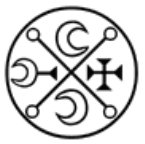 |
| Description: | "The sixty-ninth of the 72 spirits of Solomon. It appears as a star in a pentacle but can take the form of a man at the command of an exorcist. It teaches the virtues of birds and precious stones; the similitudes of all kinds of birds fly before the exorcist. Since it is a Great Marquis, it governs 30 legions of spirits. Like Bifron, it isn't mentioned in the Dictionnaire Infernal." |
| References: | www.deliriumsrealm.com/delirium/mythology/decarabia.asp |
![]()
![]()
| Demon Name: | Eligor |
| Alternate Name: | Abigor and Eligos |
| Nicknames: | None |
| Appearances: | "Eligor is a giant boss guarding the Arms Depot in Order of Ecclesia. He looks more like a centaur than his origin would dictate. Nevertheless, he is one of the biggest bosses in the Castlevania universe." |
| Game Pictures: |
 |
| Other Pictures: |
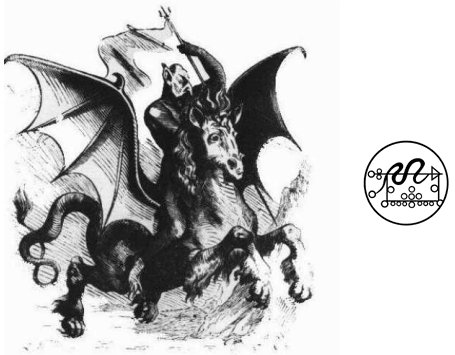 |
| Description: | "A great duke who governs 60 legions of spirits. He is the fifteenth spirit of Solomon. He appears as a handsome knight carrying a lance, an ensign, and a scepter. Eligor discovers hidden things and knows of events to come plus the secrets of warfare. He can instruct leaders and teach them how to earn their soldiers' respect." |
| References: | www.deliriumsrealm.com/delirium/articleview.asp?Post=80 www.lucifer.tw/fantasy/artist/devil/plancy.htm |
![]()
![]()
| Demon Name: | Forneus |
| Alternate Name: | None |
| Nicknames: | None |
| Appearances: | "It appears as a lesser enemy in Portrait of Ruin's City of Haze and in Order of Ecclesia's Kalidus Channel; he is portrayed as a jellyfish." |
| Game Pictures: |
 |
| Other Pictures: |
 |
| Description: | "A mighty and great marquis of hell appearing in the form of a great sea monster. It's the thirtieth spirit of Solomon; he governs twenty-nine legions of spirits. He teaches the art of rhetoric and the knowledge and understanding of tongues. He causes men to have good names." |
| References: | www.deliriumsrealm.com/delirium/articleview.asp?Post=153 |
![]()
![]()
| Demon Name: | Gaap |
| Alternate Name: | Tap |
| Nicknames: | None |
| Appearances: | "The skeleton gargoyles that guard the Pagoda of the Misty Moon in Castlevania: Lament of Innocence. " |
| Game Pictures: |
 |
| Other Pictures: |
 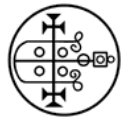 |
| Description: | "The thirty-third of the 72 spirits of Solomon. Gaap is a Great President and a Mighty Prince appearing when the sun is in some of the southern signs. He commands four Kings and 66 legions of spirits, and he was of the Order of Potentates. He teaches philosophy and all the liberal sciences, can cause love or hatred, and make men insensible. He delivers familiars out of the custody of other magicians and answers truthfully of things past, present and to come. It was said that earlier necromancers summoned Gaap by spells created by King Solomon, but, rather, it was Cham, the son of Noah, who first invocated wicked spirits. It can be conjured by virtue of the saint names of God listed in the Key of Solomon. It is to be noted that if an exorcist knows the art of Bileth, he can not make Gaap stand in front of him." |
| References: | www.deliriumsrealm.com/delirium/mythology/gaap.asp |
![]()
![]()
| Demon Name: | Glasyalabolas |
| Alternate Name: | Caacrinolas, Caasimola, Caasimolar, Cassimolar, Glassia-Labolas and Glasya |
| Nicknames: | None |
| Appearances: | "A lesser enemy guarding the Great Stairway in Portrait of Ruin. His sprite is similar to the picture seen in the Dictionnaire Infernal." |
| Game Pictures: |
 |
| Other Pictures: |
  |
| Description: | "The twenty-fifth spirit of Solomon, it's a mighty president and earl governing thirty-six legions of spirits. He teaches liberal arts, inspires murder, makes men invisible, and predicts the future. He teaches all things past and future. He appears as a dog with griffin wings." |
| References: | www.deliriumsrealm.com/delirium/articleview.asp?Post=159 |
![]()
![]()
| Demon Name: | Kali |
| Alternate Name: | Cali, Kali Ma |
| Nicknames: | Black Female |
| Appearances: | "In Castlevania: Aria of Sorrow, Kali and Durga are four-handed lesser enemies. The first is black while the second is white. This is interesting, since Kali is often depicted as black while Durga is another form of Devi. Also, an item called the Skull Necklace is sometimes dropped by Kalis. In the occidental versions of the game, she is called Curly." |
| Game Pictures: |
  |
| Other Pictures: |
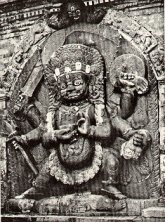  |
| Description: | "The name Kali is a female version of the world 'kala,' which means 'dark,' 'time' and 'death.' Kali is the destructive aspect of the Goddess Devi; she is said to have emanated from the brow of the goddess Durga (slayer of demons) during a battle between the divine and the anti-divine forces. Another origin would be a mountain tribal goddess in the north-central part of India. In later traditions, Kali has become inextricably linked with Shiva, and for this she has become an important Tantric figure. For Tantric worshippers, it was essential to face her curse, the terror of death and the blessings from her beautiful maternal aspect. Since the 18th century, Kali is sometimes only worshipped as the Great Mother, devoid of her usual violence. In most representations, she has a garland of fifty human skulls around her neck. She is black and emaciated, her purple lips often streaming with blood. She often has weapons and severed heads in her hands while also making the peace gestures. The skulls represent the fundamental energies of the cosmos while the hands symbolize both her creature and her destructive power. The above sculpture from Kali is found in Kathmandu, Nepal. In Dictionnaire infernal, Kali is a queen of the demons and sultana of the Indian hell." |
| References: | encyclopedia.laborlawtalk.com/Kali www.deliriumsrealm.com/delirium/articleview.asp?Post=127 |
![]()
![]()
| Demon Name: | Leraje |
| Alternate Name: | Leraie, Loray and Oray |
| Nicknames: | None |
| Appearances: | "A feminine lesser enemy appearing in two of Portrait of Ruin's portal areas: The Great Stairway and the Nation of Fools. Her skin is green because it's the color of the cloth worn by the 'real' Leraje. However, she should be carrying a bow and not a rifle." |
| Game Pictures: |
 |
| Other Pictures: |
 |
| Description: | "The fourteenth spirit of Solomon is a marquis great in power, appearing as an archer clad in green and carrying a bow and quiver. He causes great battles and contests and injures made by arrows to putrefy. He belongs to the Sagittarius and commands thirty legions of spirits." |
| References: | www.deliriumsrealm.com/delirium/articleview.asp?Post=183 |
![]()
![]()
| Demon Name: | Lilim |
| Alternate Name: | Lilin |
| Nicknames: | None |
| Appearances: | "A single lilim lives in the Machine Tower in Castlevania: Circle of the Moon. Even if she is similar to the succubus of the same game, she is presented as more powerful. " |
| Game Pictures: |
 |
| Description: | "According to The Alphabet of Ben-Sira, an anonymous medieval test, lilims are the daughters of Lilith and Asmodeus. As did their mother, they also kidnapped children. Such demons were also feared because their functions were also similar to that of a succubus." |
![]()
![]()
![]()
![]()
| Demon Name: | Lucifer |
| Alternate Name: | None |
| Nicknames: | Light-bearer and Ligher-giver |
| Appearances: | "Even if Lucifer doesn't make an appearance in the series, a relic called the Lucifer's Sword was found by Leon Belmont in the Ghostly Theatre in Castlevania: Lament of Innocence." |
| Other Pictures: |
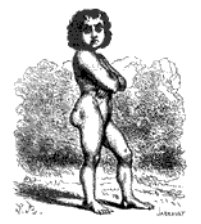 |
| Description: | "There are many gods in other religions similar to Lucifer: In Egypt, there is a serpent godfather of lightning that fell to earth. The Babylonian god Zu was a lightning god who also fell to earth. The name Lucifer means 'light-bearer'; in the New Tastement, the bearer of light is the Christ. A general view is that Lucifer was the name of Satan while he was in Heaven. According to some magicians, Lucifer rules over the East and commands the Europeans and Asians. He is a Prince of Hell and was once a Seraphim. He governs ninety legions. Witches describe Lucifer as grayish with blue arms and red culottes decorated with ribbons. He has the face of a beautiful young child, which changes to monstrous and inflamed when he is angry. He is the first to be invoked in litanies of the Sabbath." |
| References: | www.deliriumsrealm.com/delirium/articleview.asp?Post=184 |
![]()
![]()
| Demon Name: | Malphas |
| Alternate Name: | Malpas |
| Nicknames: | None |
| Appearances: | "It's a boss in the Clock Tower in Castlevania: Symphony of the Night and in the Dark Chapel in Castlevania: Dawn of Sorrow. Its soul makes an appearance in The Study in Castlevania: Aria of Sorrow. It's also a minor enemy in Castlevania: Portrait of Ruin. In the Occidental versions of Symphony, Malphas is called 'Karasuman.' " |
| Game Pictures: |
 |
| Other Pictures: |
 |
| Description: | "The thirty-ninth of the 72 spirits of Solomom. Malphas first comes in the shape of a crow but can take a human form if requested; though, it retains a bit of the hoarse voice of the animal. Since it can build houses and high towers, it helped build Solomon's Temple. It breaks down enemies barricades, finds good workers, and supplies good familiars. If it receives a sacrifice, it will receive it kindly, but it will deceive the sacrificers. Malphas is a great president who governs 40 legions of spirits." |
| References: | www.deliriumsrealm.com/delirium/mythology/malphas.asp |
![]()
![]()
| Demon Name: | Pazuzu |
| Alternate Name: | None |
| Nicknames: | None |
| Appearances: | "The boss inhabiting the throne room in the Castle Top Floor in Castlevania: Harmony of Dissonance. However, the spritework is more satyr-like than what is portrayed of the real mythological character." |
| Game Pictures: |
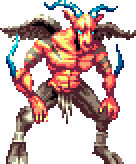 |
| Other Pictures: |
|
| Description: | "An Assyrian demon of the South-west wind bringing droughts, famines and locusts. He is often depicted with a body of a man, the head of a lion, two pairs of wings, and the tail of a scorpion. The right hand is often pointed upward and the left downward, which represents life and death or creation and destruction. He is depicted on amulets that are said to offer protection against the Lamatsu, because she was once defeated by Pazuzu. This is also the demon possessing the girl in the movie The Exorcist. Two of the pictures above show a protective amulet with Pazuzu on it; this amulet and the other sculpture are seen in the Louvre Museum in Paris." |
| References: | www.ezida.com/pazuzu.htm |
![]()
![]()
| Demon Name: | Procell |
| Alternate Name: | Crocell and Crokel |
| Nicknames: | None |
| Appearances: | "Many such spirits possess the water of the Subterranean Hell in Castlevania: Dawn of Sorrow. This is due to Procell's relatively association with water." |
| Game Pictures: |
 |
| Other Pictures: |
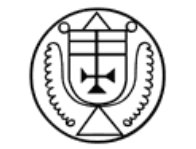 |
| Description: | "The forty-ninth of the seventy-two spirits of Solomon, Procell is a strong and great duke that commands forty-eight legions of spirits. At the command of an exorcist, he will produce great noises like those made by great waters. He teaches the art of geometry and the liberal sciences plus he speaks mystically of hidden things. He also warms waters and discovers hidden springs. He is described as an angel who speaks mystically and darkly of hidden things; unfortunately, he isn't pictured in the Dictionnaire Infernal." |
| References: | www.deliriumsrealm.com/delirium/mythology/crocell.asp |
![]()
![]()
| Demon Name: | Rahab |
| Alternate Name: | None |
| Nicknames: | Ruler of the Sea |
| Appearances: | "There is a sword in Castlevania: Aria of Sorrow called the Rahab's Sword, found in the Underground Reservoir. One year later, in Castlevania: Dawn of Sorrow, the 'true' Rahab is guarding the path to the Subterranean Hell." |
| Game Pictures: |
 |
| Other Pictures: |
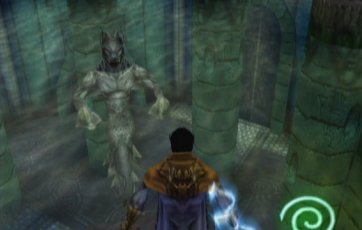 |
| Description: | "In the Bible, Rahab is a prostitute living in the city of Jericho; she helped the Hebrews to conquer the city. In Jewish folklore, Rahab is a sea-demon responsible for shaking the waters and producing big waves; it's also responsible for the roaring of the sea. This name originally designated the primordial abyss, and it is sometimes associated with Leviathan. Rahab is mentioned in the Talmud and the Old Testament; it has also been suggested that it was responsible for the drowning of the Egyptian troops during the Hebrew escape from Egypt. Since I couldn't find a picture of the demon Rahab, I have instead offered a picture from Legacy of Kain: Soul Reaver. In this game, Rahab is one the six vampire brothers and has evolved into an aquatic creature." |
| References: | www.gameswelike.com/web/images/SoulReaver/Rahab.jpg |
![]()
![]()
| Demon Name: | Stolas |
| Alternate Name: | Solas and Stolos |
| Nicknames: | None |
| Appearances: | "A lesser enemy that can summon other foes, it can be found in the Top Floor and the Chaotic Realm in Castlevania: Aria of Sorrow and in The Abyss in Castlevania: Dawn of Sorrow. The sprites in the games are very similar to those images pictured in the Dictionnaire infernal." |
| Game Pictures: |
 |
| Other Pictures: |
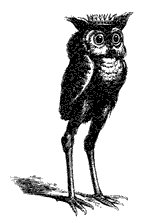 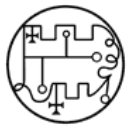 |
| Description: | "The thirty-sixth of the 72 spirits of Solomon, Stolas is a prince of hell who rules 26 legions of spirits. It appears as an owl and can assume human form if requested by an exorcist. It teaches astronomy and the virtues of herbs and precious stones." |
| References: | www.deliriumsrealm.com/delirium/mythology/stolas.asp |
![]()
![]()
![]()
![]()
| Demon Name: | Ukoback |
| Alternate Name: | None |
| Nicknames: | None |
| Appearances: | "This lesser enemy is found in the underground part of the castle -- the Catacombs in Castlevania: Symphony of the Night, in the Underground Reservoir in Castlevania: Aria of Sorrow, in the Subterranean Hell in Castlevania: Dawn of Sorrow, and finally the Great Stairway in Castlevania: Portrait or Ruin." |
| Game Pictures: |
 |
| Other Pictures: |
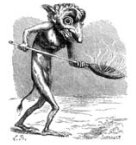 |
| Description: | "A demon of an inferior order who maintains the oil in the infernal boilers. It appears with a blazing body and is sometimes called the inventor of frying and fireworks." |
![]()
![]()
| Demon Name: | Vapula |
| Alternate Name: | Naphula |
| Nicknames: | None |
| Appearances: | "Vapula is a powerful lesser enemy encountered in the Dark Academy and 13th Street in Portrait of Ruin. His sprite is correct in regard to the description as seen in the grimoires." |
| Game Pictures: |
 |
| Other Pictures: |
 |
| Description: | "The sixtieth spirit of Solomon is a great duke, mighty and strong; it governs thirty-six legions of demons. He appears in the form a lion with a gryphon's wings. He instills in men the knowledge of handcrafts, professions, philosophy and other sciences." |
| References: | www.deliriumsrealm.com/delirium/articleview.asp?Post=343 |
![]()
![]()
| Demon Name: | Vassago |
| Alternate Name: | None |
| Nicknames: | None |
| Appearances: | "Ghost-like monsters that are found only in the two 3D Playstation 2 titles. In Castlevania: Lament of Innocence, they're found in the House of Sacred Remains, and the Dark Palace of Waterfalls. Hector finds them in the Forest of Jigramunt, the Tower of Eternity, Cordova Town, Eneomaos Machine Tower, Aiolon Ruins and Dracula's Castle." |
| Game Pictures: |
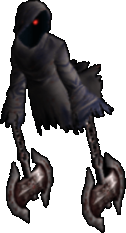 |
| Other Pictures: |
 |
| Description: | "A mighty prince of the same nature as Agares. Vassago governs 26 legions of spirits; it is of a good nature and its purpose is to declare things past and to come." |
![]()
![]()
